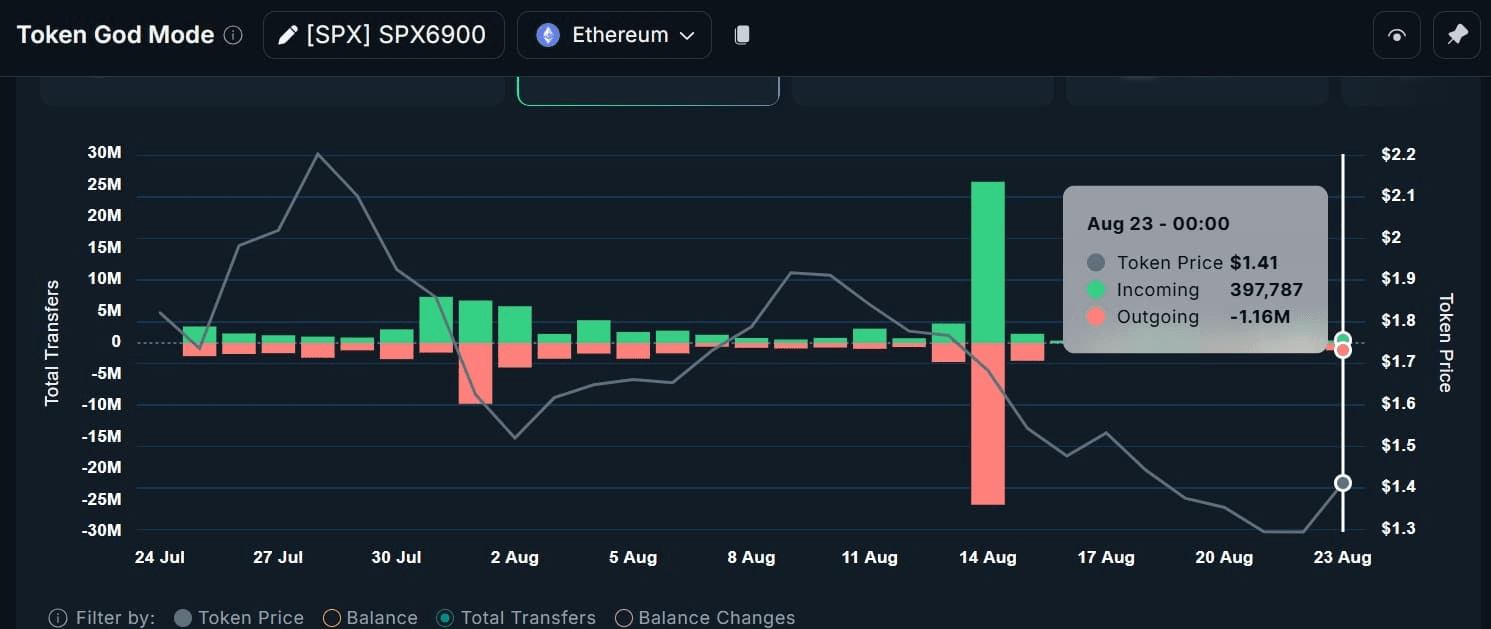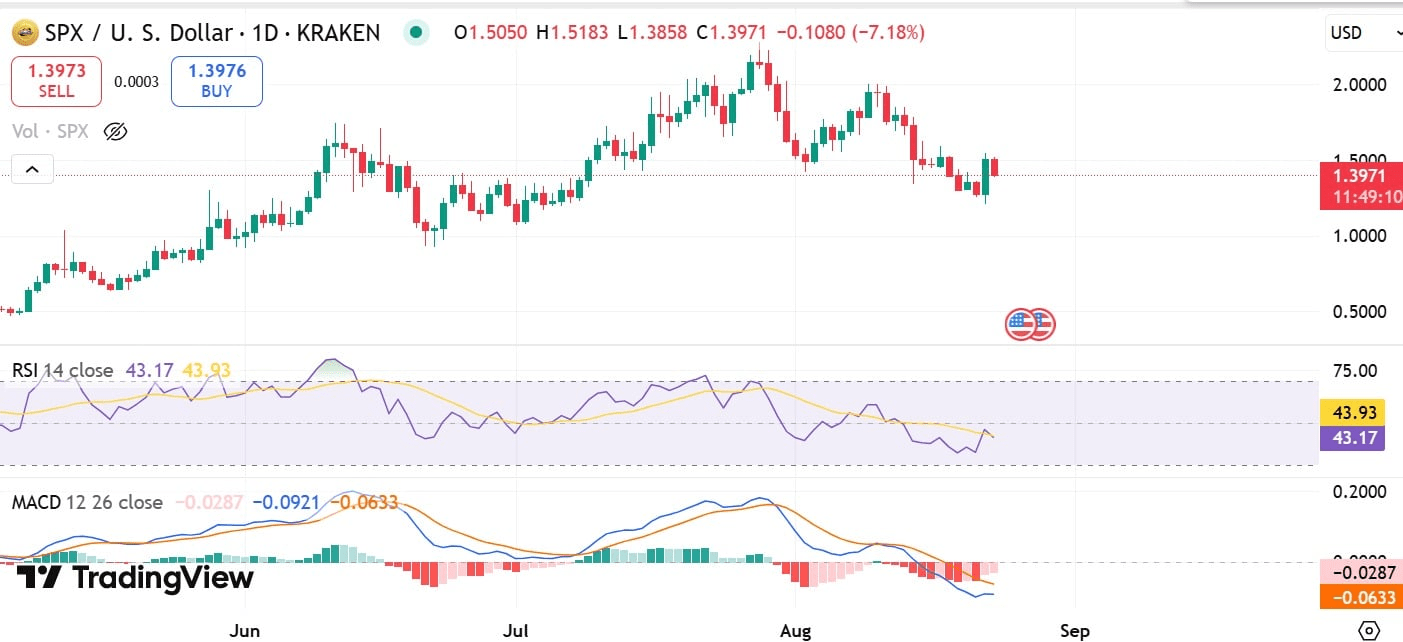Due to retail buying on dips, SPX6900 surged to $1.50, but the profit-taking by whales slowed the upward trend.
Key Points
SPX6900 once rose 12.38% to $1.50, then sharply fell to $1.39 as of the time of writing. Whales sold off 1.16 million tokens, while retail investors continued to accumulate.
SPX6900 [SPX] surged 12.38%, reaching a local high of $1.510, then fell sharply to $1.39 as of the time of writing.
During the same period, the trading volume of memecoins surged 124.9% to $83 million, while market capitalization rebounded to $1.4 billion.
Generally, when both trading volume and market capitalization rise simultaneously, it reflects a continuous increase in capital participation and stable capital inflow.
SPX: Retail buyers are entering
After SPX6900 dropped to $1.20, small-scale investors rushed into the market to buy on dips. As a result, retailers stimulated demand for memecoins, driving up their prices.

According to CoinGlass, SPX6900 has recorded negative spot net flow for six consecutive days.
On August 23, the net flow of memecoins decreased to -1.16 million dollars, indicating that outflows from exchanges were higher than inflows.
When net flow turns negative, it means that buying pressure on exchanges is greater, which is usually a precursor to price increases.
Whales are extremely pessimistic
Surprisingly, as prices rebounded from recent declines, whales of SPX6900 began to take profits. According to Nansen, whales sold 1.16 million SPX tokens, ultimately netting only 397,700 tokens.

As a result, the balance change of the largest position holders became negative, dropping to a low of -795,000. A negative balance change indicates that outflows exceed inflows, which is a clear aggressive selling signal.
Derivatives bets on the S&P 500 index falling
Derivatives data shows that despite the price rise, most market participants are still betting on a market decline.

According to CoinGlass, SPX's derivatives trading volume surged 166.6% to $291 million, while open interest jumped 12% to $128 million.
Generally, when these two indicators rise at the same time, it indicates an increase in participation and capital inflow in the futures market.

Meanwhile, the long-to-short ratio dropped to 0.843, with shorts accounting for 54% of total futures contracts and longs 45.7%.
This demand for shorts is more pronounced on Binance, with the ratio of top traders' long to short accounts dropping to 0.57 and 0.63.
When shorts dominate in futures, it indicates that participants are bearish and actively betting on price declines.
A brief upward trend?
According to AMBCrypto's analysis, as retail traders flooded the market to buy on dips, SPX rebounded.
Meanwhile, due to whales turning to cash out while derivatives remain bearish, memecoins experienced a significant pullback.
As a result, the relative strength index (RSI) of memecoins showed a bearish crossover, falling from 46 to 43 as of the time of writing. Meanwhile, its MACD also fell to -0.091, further confirming weak buying pressure.

When these momentum indicators are in this state, it signals weak upward momentum, with weak forces dominating the market.
That is to say, if current conditions remain unchanged, especially with whale sell-offs, SPX6900 could drop to $1.21.
However, if the market sentiment of large entities shifts while retailers hold their positions, SPX will recover to $1.50 and target a resistance level of $1.70.



